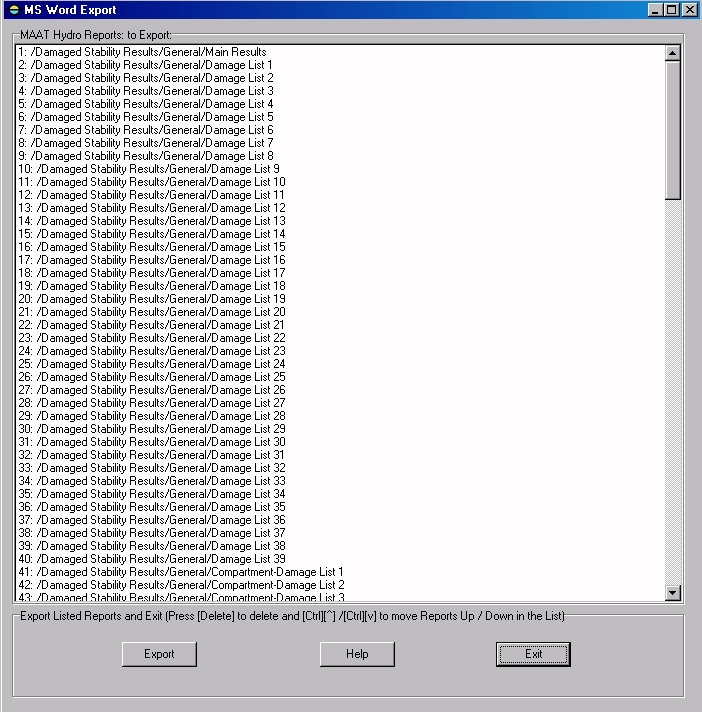2D Browser/MS Word Export
____________________________________________________________________________________________________________________
Purpose:
This function allows sorting and exporting directly a selection of MAAT Hydro reports to MS Word in a single global operation, instead of copying / pasting them one by one with the 2D viewport 'Copy' function.
Inputs:
The following dialog box pops up when the function is selected, listing all the reports found in the selected 2D browser items:
If necessary, the listed reports can be sorted before being exported to MS Word (simply select an item in the list and press [Delete] to remove it, [Ctrl][^] to move it up or [Ctrl][v] to move it down).
When the items displayed in the list corresponds to the reports you want to export, click on the [Export] button to activate MS Word and transfer the data in a blank document.
The [Help] button allows displaying this online help page (Internet access necessary).
The [Exit] button allows cancelling the operation.
Outputs:
The listed reports are pasted in a new MS Word document.
Limitations:
For obvious reasons, MS Word must be preliminarily installed on your system and you must have the necessary access rights. Moreover, in certain cases, it may also be necessary to turn it in 'Windows XP SP3 Compatibility Mode.
Typical use:
Exporting copious MAAT Hydro results to MS Word in a single global operation.
Example:
- Open the ‘Example Ship.m2a’ file and double click on ‘Damage 100% Supply’ in the 3D browser to select this virtual ship:
- Select '/Tools/Tank Calibration' in the menu bar.
- Click on the [OK] button directly to start the tank calibration.
- When the calculation is finished and the results listed in the 2D browser, select the folders you want to export (you can select 'Tank Capacities' for exporting all the reports or expand it for only selecting certain child folders).
- Right click when the items to export are selected and select 'MSWord Export' in the popup menu.
- Control the obtained export list in the dialog box and select one of the listed reports to delete it by pressing the [Delete] key (notice that the deleted items cannot be recovered without exitting the dialog box).
- If you want to move a report in the export list, keep the [Ctrl] key pressed and alternatively press the up and down arrow keys to move the item to its new position.
- Click on the [Export] button to export the current reports list to MS Word or on the [Exit] button to cancel.

